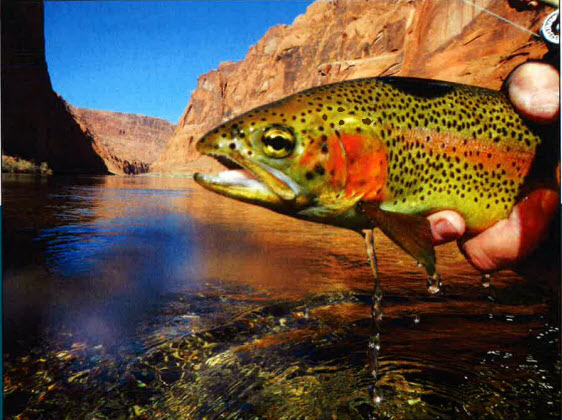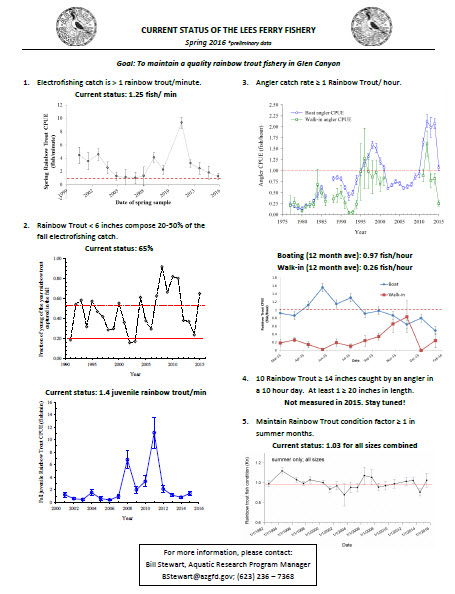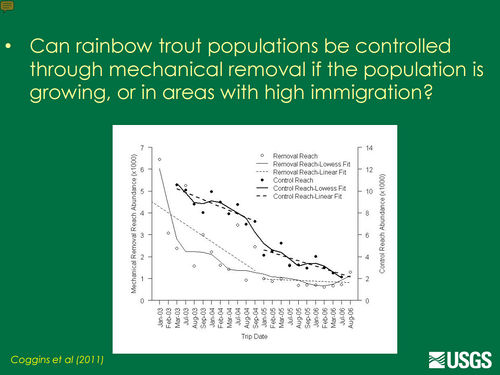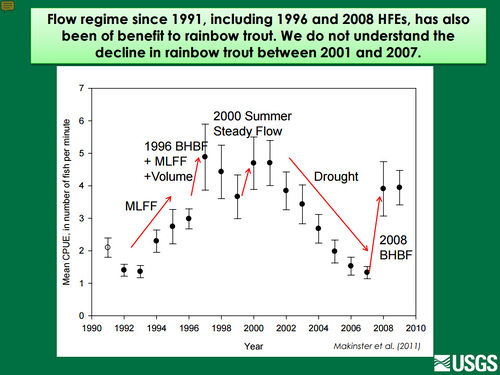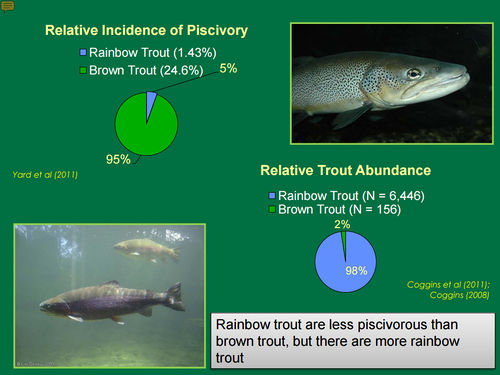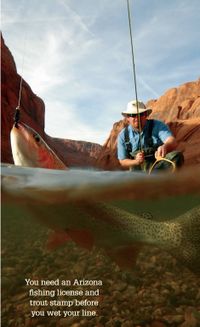Difference between revisions of "FISHERY"
Cellsworth (Talk | contribs) |
Cellsworth (Talk | contribs) |
||
| Line 52: | Line 52: | ||
[[File:RBT BT piscivory.jpg|500px]] | [[File:RBT BT piscivory.jpg|500px]] | ||
| − | |||
| − | |||
| − | |||
| − | |||
| − | |||
| − | |||
| − | |||
| − | |||
| − | |||
| − | |||
| − | |||
| − | |||
| − | |||
| − | |||
| − | |||
| − | |||
| − | |||
| − | |||
| − | |||
| − | |||
| − | |||
| − | |||
| − | |||
| − | |||
| − | |||
| − | |||
| − | |||
| − | |||
| − | |||
| − | |||
| − | |||
| − | |||
| − | |||
| − | |||
| − | |||
| − | |||
| − | |||
| − | |||
| − | |||
| − | |||
| − | |||
| − | |||
| − | |||
| − | |||
| − | |||
| − | |||
| − | |||
| − | |||
| − | |||
| − | |||
| − | |||
| − | |||
| − | |||
| − | |||
| − | |||
| − | |||
| − | |||
| − | |||
| − | |||
| − | |||
| − | |||
===''Quick Facts''=== | ===''Quick Facts''=== | ||
| Line 197: | Line 136: | ||
*[http://www.usbr.gov/uc/rm/amp/amwg/mtgs/11aug24/Attach_06.pdf Rainbow and Brown Trout disporpotionately prey on native fish] | *[http://www.usbr.gov/uc/rm/amp/amwg/mtgs/11aug24/Attach_06.pdf Rainbow and Brown Trout disporpotionately prey on native fish] | ||
*"Brown Trout fish consumption rate is '''20 times''' that of Rainbow Trout..." (MYard) | *"Brown Trout fish consumption rate is '''20 times''' that of Rainbow Trout..." (MYard) | ||
| + | |||
| + | |||
| + | |- | ||
| + | ! <h2 style="margin:0; background:#cedff2; font-size:120%; font-weight:bold; border:1px solid #a3b0bf; text-align:left; color:#000; padding:0.2em 0.4em;">[http://leesferry.com/river-report/?utm_source=+12%2F15%2F14&utm_campaign=Lees+Ferry+Mailing&utm_medium=email: Fishing Report] </h2> | ||
| + | |- | ||
| + | |style="color:#000;"| | ||
| + | |||
| + | JUNE 17 , 2016 | ||
| + | |||
| + | FISHING REPORT | ||
| + | |||
| + | UPRIVER REPORT | ||
| + | 7 | ||
| + | |||
| + | WALK-IN REPORT | ||
| + | 4 | ||
| + | |||
| + | SPIN REPORT | ||
| + | 5 | ||
| + | |||
| + | 1 = GO ELSEWHERE | ||
| + | 10 = GET HERE NOW! | ||
| + | |||
| + | CROWD REPORT | ||
| + | |||
| + | UPRIVER CROWD | ||
| + | |||
| + | 1 WEEKDAY | ||
| + | 2 WEEKEND | ||
| + | |||
| + | WALK-IN CROWD | ||
| + | |||
| + | 1 WEEKDAY | ||
| + | 1 WEEKEND | ||
| + | |||
| + | 1 = SLEEP LATE AND FISH WHEREVER | ||
| + | 10 = VERY CROWDED, GET UP EARLY | ||
| + | |||
| + | UP-RIVER SUMMARY | ||
| + | If you do not follow Lees Ferry Anglers on Facebook, you should. We make several posts each week about current conditions at Lees Ferry. | ||
| + | |||
| + | On June 1, the higher summer flows began. As we had hoped, the increased water flows have improved the fishing significantly compared to the previous few months. The higher flows have stirred up the larger food items (scuds and worms) and we are seeing unusually large midge hatches. For most of the spring, the fish were holding in the deeper water and it was tough to get to them. This, coupled with our crappy spring weather, made our fishing slower than normal. Now that the water has risen, the fish are moving back into the shallower water and are much more eager to eat. The fish are in astoundingly great shape and we are catching all sizes of fish from large to small, including a 20-incher on my boat this week that weighed every bit of 4 pounds. The other good news is that we are starting to catch quite a few smaller fish (under 10-inches) which means there are younger generations of trout that are moving out of hiding and into the main channel to feed; these will be the fish that we are catching for the next few years. | ||
| + | |||
| + | The great fishing should continue throughout the summer. The cicadas are starting to sing and we’ll be making regular posts on Facebook regarding their hatches. | ||
| + | |||
| + | The best flies of recent have been scuds, worms and midges. Stop by or call the shop to get the most recent hot fly selection. Wade fishing continues to be highly productive as has been drift fishing from the boat. Weekend flows are lower and as a result the wade fishing is usually better those days. | ||
| + | |||
| + | El Nino came through in the end and provided the Lake Powell drainage with a good snowpack. The lake has risen over 20-feet and we have more to go … I’m hoping that the lake ends up 30 or more feet. The Powell’s current elevation is higher than it has been since 2012. The high inflow will also stir up nutrients that will show up in the river next winter and spring. | ||
| + | |||
| + | The river looks great with abundant algae covering most of the bottom. The algae indicate that there is a good nutrient flow from the water above the dam. These nutrients serve as the foundation for macroinvertebrates that support the food web. | ||
| + | |||
| + | The river is a living creature. Just because you caught fish in a certain spot in years past, don’t think that you are going to experience the same success this year. Fishing is changing daily. It is our goal and desire that everyone have a great trip to the Ferry. Be sure to stop by the shop to see the flies that are currently working. The flies change on a daily basis and every day LFA guides let everyone at the shop know the top producing flies and how to use them. We are anxious to share this knowledge with you – even where to fish! | ||
| + | |||
| + | There is an ongoing aquatic food base study that has taken place over the past couple of years. The purpose of this study is multifaceted and is studying the relationship of flows on food production, taking inventories of and monitoring populations of aquatic insects and invertebrates that live in the river and other very important aspects of the aquatic food base. I believe that this is by far the most important study that has ever been conducted on this river. Previously, hundreds of millions of dollars have been spent studying sediment while ignoring the aquatic food base and resource. Common sense dictates that fish, birds and animals do not live off of dirt or sand. The aquatic food base and habitat are the foundation for all that lives in the Colorado River. One of the long term goals of the food base study is to determine how to enhance the populations and production of aquatic insects in the river which will benefit native fish, trout, and migratory bird populations. This is a study and a goal that we can all embrace! | ||
| + | |||
| + | Quagga mussels have become established in Lake Powell and we are now seeing some in the river below the dam. Their arrival in the river happened sooner than I expected. So far, there has not been a major infestation and there is some thought by experts that they will not become very well established in the river due to the current. Be aware and remember to dry waders and boots before using them in any other body of water. Also, all private boats should drain all water from the boat and live-wells as soon as you exit the river. We all need to do our part to limit the transport of this and all invasive species. | ||
| + | |||
| + | WALK-IN SUMMARY | ||
| + | We are hearing positive reports on the walk-in area. I expect the fishing to improve as the summer progresses. | ||
| + | |||
| + | SPIN FISHING SUMMARY. | ||
| + | Spin fishing has improved greatly. For most of the spring there was so much algae that it was practically impossible to get a drift without the lure and line being clogged with algae. The higher flows that began June 1 have helped to clear this algae, so conditions have improved greatly | ||
| + | |||
| + | ---- | ||
|- | |- | ||
Revision as of 12:11, 21 June 2016
|
|
In 1964, the Lees Ferry tailrace on the Colorado River was given birth by the completion of Glen Canyon Dam, which impounded Lake Powell. Subsequent water releases from the bottom of Lake Powell changed the once highly turbid, warm waters of the Colorado River into a constant cold (46-50°F), clear flowing river. Shortly after completion of the dam, the Arizona Game and Fish Department stocked rainbow trout (Oncorhynchus mykiss) in the 15-mile Lees Ferry reach and, in 1981, began to manage this section of river as a Blue Ribbon trout fishery. The trout began to flourish in the Lees Ferry reach from 1970-1985 when catches of rainbow trout above 10-pounds were not uncommon, and angler pressure was relatively low. In 1991, however, the Bureau of Reclamation implemented the Record of Decision flow regime, which consisted of higher minimum and more stable flows and allowed for increased trout reproduction and survival. Under these conditions, a huge population of trout developed causing individual fish growth rates to decline. Quite simply, there was a large number of fish competing for limited space and food items, resulting in a fishery where trout less than 14-in were dominant. In 2000, the Arizona Game and Fish Department began a long-term monitoring program sponsored by Grand Canyon Monitoring and Research Center to determine the effects of Glen Canyon Dam operation on the trout fishery at Lees Ferry and to make recommendations for improving this fishery. Since 2000, our data collection has shown an increase in the general health of all trout age classes (especially since 2002). This increase in fish health is usually associated with an increase in growth rates. There has been a marked increase in catch rates of young-of-the-year fish in recent years. With successful spawning and recruitment continuing to occur, fishing conditions in Lees Ferry are improving.
|
| --- |
--- | --- |
|---|
HISTORY
|
Additional Links
|
